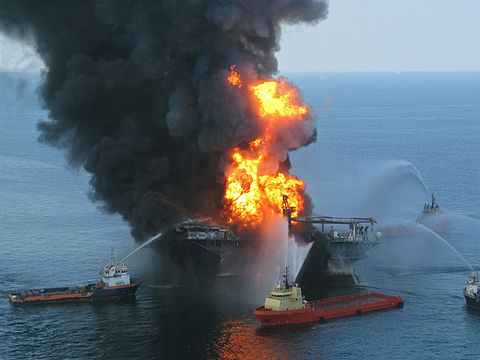Enterprise Risk Management (Eco 617)
Enterprise Risk Management (Eco 617)

Course Description
At Delta Airlines, a computer problem resulted in $150M in losses. The Deepwater Horizon accident cost BP an estimated
$65B. Both of these accidents could have been easily prevented. How can companies better manage the risks they
face?
Risk management is a process that begins with identification of risks and opportunities the firm faces. Students will
learn different methods for risk identification, and their strengths and weaknesses. Risk identification is extremely
important since firms are often unaware of the risks they face as the examples from Delta and BP illustrate. After risks
are identified, the next step is to measure the risk. Students will learn how to measure possible outcomes and the
likelihood of each outcome. After the risk is measured, the risk officer can make a decision about how much risk
mitigation to undertake. Some risks are worth taking and it is impossible to eliminate all risk. Students will learn how
to mitigate risk and how to decide which risk mitigation activities are worthwhile. Finally, the risk management process
continues by monitoring the risk, which may change over time.
The course will focus on enterprise risk management, which considers how risks affect the entire enterprise. A negative
outcome in one division of the firm is often a positive outcome in another. Conversely, some risks to individual parts of
the firm magnify each other, creating an enterprise risk that is greater than the sum of the individual risks. Students
will learn how to aggregate risk across the enterprise.
Finally, risk management integrates with the firm's sustainability program. This course will focus especially on climate
risk and sustainability-related risks more generally, such as the risk of environmental accidents, risk of accidental
non-compliance with environmental regulations, reputation risks arising from poor sustainability policies (e.g. not
taking steps to ensure safe working conditions across the supply chain), and more. Becoming more sustainable mitigates
these risks. Reduction in risk mitigating costs such as insurance is an additional benefit to becoming more sustainable.
General Information
Professor: Professor David L. Kelly (Dave).
Course Meetings:
Section 35: Monday and Wednesday from 1:45-4:00 pm in room Aresty 532.
Office: Room 521B, Jenkins School of Business.
Office hours: Tuesdays from 1-3 pm, room TBA.
Contacts: Dave can be contacted via phone (8x3725) or email (dkelly@miami.edu).
Web Site:
All notes, homeworks, reviews, quizzes, and solution sets and the syllabus will be posted on BlackBoard. The syllabus is
also available on Dave's website (http://moya.bus.miami.edu/~dkelly/teach/eco617/index.html)
Final Exam: Wednesday April 30, 1:45-4 pm in Aresty 532.
Prerequisites
This course has no pre-requisites. Nonetheless, I will assume a working knowledge of basic economic concepts such as
supply and demand, and basic math. See me for some extra references if you feel your skills are lacking in either area.
Textbooks
Unfortunately, it has proven very difficult to find a textbook for risk management that properly incorporates
sustainability concepts. So the course will be notes based. I will give sources for background reading as we go along.
Grades
- 3 Homeworks 25% (due dates: March 26, April 9, April 23)
- First Quiz (April 2) 25%
- Second Quiz (April 16) 25%
- Final Quiz (April 30) 25%
Additional Notes
- Attendence is required and very important for this class. All exam material comes from class notes. Dave
will provide detailed notes, but many in-class examples of the types of problems on quizzes are not provided. Smart
students will attend every class and take detailed notes on the in-class examples, and will therefore find that the
homeworks and quizzes are straightforward.
- There is a homework, quiz, or review sheet due every week. Each homework is worth 8.3%, about a letter grade.
Homeworks are due at the beginning of each class, in class. Showing up 20 minutes late because you didn't finish the
homework on time is not acceptable. Putting a homework in my mailbox, under my door, etc. is also not acceptable.
Emailing homework prior to the beginning of class is acceptable and is what most students prefer. Only in the most dire
emergencies can a student be excused from turning in a homework on time. Even in dire emergencies Dave does not allow
the homework to be turned in late, but will instead weight the final more. Students must let Dave know of their dire
emergency before the homework is due or else a zero is automatically recorded. Finally, the homeworks sometimes
demonstrate how the concepts used in class are applied in the "real world." Because the real world is complicated, the
homeworks can be long. Do not wait until the last minute to start the homeworks.
- The three quizzes are April 2, April 16, and April 30. Now is the time to mark your calandars. Only in the most dire
emergencies can a student not take a quiz at the scheduled time. Even in dire emergencies, Dave does not allow a
make-up, but instead counts the final double. STUDENTS MUST LET DAVE KNOW OF THEIR DIRE EMERGENCY BEFORE CLASS ON THE DAY
OF THE QUIZ OR ELSE A ZERO IS AUTOMATICALLY RECORDED. LEAVING ME A MESSAGE OR EMAIL AND NOT SHOWING UP PUTS YOU AT GRAVE
RISK OF YOUR DIRE EMERGENCY NOT BEING APPROVED, IN WHICH CASE A ZERO IS AUTOMATICALLY RECORDED.
- With six week courses, it is important to keep up. Missing one class is equivalent to missing a week's worth of
undergraduate classes.
- What they say about Dave on Rate My Professor:
- "Can be an a-- if you procrastinate."
- "God help you if you don't go to class."
Course Outline
- Introduction (March 17-19).
- Risk and Risk Management
- Risk
- Randomness versus uncertainty.
- What is risk management?
- What is enterprise risk management?
- Sustainable Business and Risk Management
- Information
- Knowns and unknowns.
- Sustainability and information.
- Risk identification.
- Surveys and polls.
- Internal meetings.
- Expert opinion.
- Audits.
- Risk measurement.
- Risk mitigation.
- Risk monitoring.
- Risk identification (March 19-26).
- Surveys.
- Objectives.
- Long and short run risk.
- Who to survey?
- Risk information.
- Risk categories.
- Internal meetings.
- Information cascades.
- Imitation bias.
- Incentive bias.
- Expert opinion.
- Optimistic bias.
- Incentive bias.
- Audits.
- Materiality Assessments.
- Materiality vs Risk.
- Assessing materiality using surveys.
- Risk Measurement (March 26 - April 9).
- Basic framework.
- Signals.
- Information events.
- HOMEWORK 1 DUE MARCH 26.
- Units of measurement.
- Variance.
- Value at risk.
- Black swan and fat tailed risk measurement.
- Risk measures important for sustainability.
- Enterprise risk measurement.
- Past Data.
- Assumptions under which past data estimates risk.
- Independence and stationarity.
- Strengths and weaknesses of past data.
- Polling and surveys.
- Theory.
- Practical issues.
- Expert opinion.
- Theory.
- Biases.
- Herding.
- Bayes Rule.
- Information cascades.
- FIRST QUIZ, April 2.
- Climate Risk Modeling
- Theory.
- Transition Risk.
- Physical Risk.
- Securities markets.
- Risk information and securities prices.
- Belief updates.
- Risk information and trading data.
- Risk averse traders.
- Prediction markets.
- Risk information and prediction markets.
- Manipulation.
- Image problems.
- Performance.
- HOMEWORK 2, DUE APRIL 9.
- Risk Mitigation (April 14 - April 23).
- Principles.
- Manager risk vs shareholder risk vs firm risk.
- SECOND QUIZ, April 16.
- Tools.
- Adaptations and resilience.
- Hedging.
- Insurance.
- Sustainability favors adaptations.
- Marginal cost of risk mitigation.
- Marginal benefit of risk mitigation.
- Employee response to risk mitigation
- HOMEWORK 3 DUE APRIL 23.
- Risk monitoring (April 23).

Up to Dave Kelly's homepage







